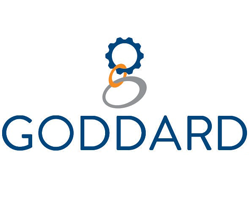
Strengthening Leadership During Change and Uncertainty in Organizations
August 14, 2020
Case categories include: Founder’s Insights Leadership

By Paul Witkay, Founder & CEO, Alliance of Chief Executives
Moments of change in an organization are nobody’s favorite, but the way leaders handle them greatly impacts their organization’s strength. Sometimes the very notion that you’re the one in charge of resolving that uncertainty—in a confident, thoughtful way, when you may not be feeling those things personally at the time—is intimidating. But you didn’t sign up for the job thinking it would be all clear skies.
In fact, what I’ve found by observing hundreds of Alliance leaders through three economic downturns, is that resilience is a funny thing. All great leaders have it, and nearly all come out of a turbulent period better off than they came in. But it may not feel like your odds are very good when you’re in the thick of it.
In this piece, I’ll share what I’ve learned from many great CEOs and executives, and hopefully impart a few ideas about how you can weather change in your organization.
The Importance of Preparing Before Being Taken By Surprise
During the dotcom bust in 2001 and the economic crisis of 2008, I realized that, as much as no one wanted them, these downturns were actually healthy in several respects. After all, they were caused by bubbles often created by irrational enthusiasm. Companies were being funded that shouldn’t have been funded. At times, it felt like CEOs were congratulating each other on how smart everyone was.
About a year before the bubble burst in 2001, an experienced CEO who ran a $100 million telcom distribution company and had been through a few economic slumps, asked his fellow CEOs how everyone was preparing for the downturn. They all looked at him with blank faces and responded, “What are you talking about?” His reply: “You know there’s going to be a downturn—there always is.”
As the dotcom crash unfolded, I went to his office and he showed me an eight-inch stack of bankruptcy documents from several of his customers. However, his company still managed to survive because they were lean, mean—and well-prepared. And, his fellow CEOs were also more prepared as a result of his simple question.
Strengthening Your Leadership Focus When Change and Uncertainty Hits
Whether it’s one specific crisis or just a general time of organizational uncertainty, the more anxious people are, the more they look to their leaders for guidance. These moments are opportunities for leaders like you and me to let others know what we’re thinking and what our companies stand for. It’s a time to revisit and reconfirm why our organizations exist, and go back to basics.
More often than not, during these times we’ll come to the realization that we need to double down, to really focus on how we can have an impact. If the change is a financial crisis or an economic problem, for instance, then it’s time to pare back all the things that aren’t absolutely necessary to achieve that vision. Here’s an exercise I’ve often used to gain clarity in times of crisis.
Strategic Planning Exercise for a Financial Crisis
Take out a blank piece of paper and assume your revenues have been cut in half. Do not think about what parts of your organization need to be cut. Instead, write down all of the customers who remain and consider whether these are valuable customers who are important to your future and profitability. Ask yourself what essential resources are needed to satisfy their requirements and how you can serve them most efficiently.
Then, review what resources you already have (people, assets, partners, etc.). Assume that you’re starting with nothing and then hire back only those people and utilize only those assets necessary to satisfy those customers who are part of your future vision. You can then address the tough decisions regarding any additional people or assets you may need. This exercise doesn’t make enforcing reductions any easier, but it does help to clarify the decisions that must be made.
Once you’ve drilled down on your priorities, rule number one when leading an organization during change and uncertainty is clear communication. Because people’s minds tend to get cloudy when they’re feeling anxious, you need to over-communicate. And what you say should be sincere; you can’t bring fake certainty into an uncertain world. People will see right through it.
When speaking to your team during choppy times, it’s important to be as clear as possible about why you’re doing what you’re doing and why your company matters to your customers. At the same time, you need to let your team know that you understand things are a little bit scary right now and that’s okay. As critical as strong leadership is, so too is your empathy towards the human beings executing the vision you’ve laid out.
Triaging for Increased Agility in Changing Times
I don’t think I’ve ever been more proud of our Alliance team than when COVID-19 hit. No one thought we’d be sheltering in place until the last minute. No one anticipated having to suddenly switch from meeting in-person to meeting 100% on Zoom. But, we didn’t miss a beat.
Within days, we were all online. It wasn’t just business as usual, though. We were actively listening to our members and conducting a constant stream of experiments. We shared innovative ideas about how to pivot and adapt. Together we faced the reality of the situation head on.
That’s also how a healthy company works in times of uncertainty: everyone finds their footing at their own pace and works together to contribute to the solidarity of the whole. But clear leadership is needed to get everyone in that mindset in the first place. For the Alliance community, it’s important that I offer an example of leadership and I’m learning how to add the most value at a time like this one.
Taking care of your teams through crisis
At the beginning of the COVID-19 crisis, our member CEOs began sharing their insights and ideas on topics such as employee engagement, work productivity, company health and employee wellness. As we transitioned from reacting to the initial shock of sheltering-in-place to a longer-term strategy of designing resilient and flexible organizations that can succeed in most any environment, the question becomes: How can we keep our team members productive while also supporting their mental health? Most organizations have great teams that work hard to get things done, but many employees are now in situations where they’re trying to balance working from home while educating their children or taking care of elderly parents.
In addition, we’re starting to recognize that this pandemic isn’t just something that we need to push through for a few months; we’re in this for the long haul. So, we must think about what investments to make now to alleviate the challenges that we will continue to face.
Providing strong leadership during this period of change in our organizations means making strategic investments that will enable your employees to remain efficient and productive while working from home. After all, people can run on adrenaline for a few months but nobody can work like that for years.
Continuing to deliver excellence under pressure
I knew our Alliance members would be affected by COVID-19, so from the start, we surveyed CEOs to measure business impact and gauge members’ needs. These surveys found that 75% had been negatively affected, 10% had been positively affected, and 15% remained unaffected.
COVID-19 Impact on Companies as Reported by CEOs
Alliance of Chief Executives Survey, 2020

With this information in hand, we reached out to those CEOs whose companies were most harmed and asked, “How can we help?” Their response was to enable them to talk directly with other CEOs who were experiencing similar challenges and generate creative approaches to their unique problems.
For example, we learned that some CEO members were in the position of asking their HR leads to do things they’ve never done before, like layoffs and compensation packages. We acted quickly to put together online forums for members’ HR managers to share their experiences, insights, and strategies. The feedback we got is that, in addition to the benefit of hearing how other companies were handling these sensitive situations, just receiving the affirmation that they weren’t alone in dealing with these challenges helped immensely. Soon after, our member CEOs asked us to enable their IT, finance and sales, and marketing executives to also come together to learn new ways to adapt to their new environment.
Leadership During Change and Crisis: Your Organization Doesn’t Have to Be a Solo Act
There’s a need for leaders to understand, share, and learn what other leaders are doing—and, the Alliance provides that opportunity. The Alliance of Chief Executives is an active community of innovative business leaders that connect for deep strategic exchanges, challenging each others’ assumptions and spawning new ideas. Members represent diverse industries within the U.S. and across the globe, cross-pollinating unique insights and breakthrough ideas.
Alliance members are prepared for organizational change and uncertainty because they have the support to deal with most any challenge that arises and innovate faster to take advantage of changing times.
If your company is facing change and uncertainty, strengthen your leadership potential by contacting the Alliance of CEOs.
About
The Alliance of Chief Executives is an active community of business leaders that focuses on deep strategic exchanges, challenging existing assumptions and generating fresh ideas.
Contact Us
Alliance of Chief Executives, LLC
2175 N. California Blvd.,
Suite 605
Walnut Creek, CA 94596
- 925-942-2400 Office
- 925-956-4424 Fax
- Email: info@allianceofCEOs.com
Newsletter
Subscribe to our newsletter and stay up to date with the latest Alliance news!













































